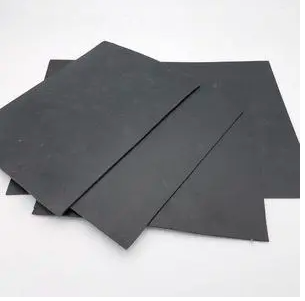- Understanding the Role of Geomembrane Liners in Waste Management
- Innovations in Geomembrane Liners for Water Management
- Geomembrane Liners: A Comprehensive Guide
- The Future of Geomembrane Liners in Civil Engineering
- Geomembrane Liners: Enhancing Landfill Stability
Manager:
WhatsApp:+86 177 0135 2670
Tel:+86 177 0135 2670
Email:marketing@okorder.com
Address:3rd Floor, No.2 Building, No.1 Sanlihe Road
The Silent Guardians: The Unseen Strength of Geomembrane Liners
In the intricate interplay of civil engineering, where nature mingles with human ingenuity, geomembrane liners remain silent sentinels against environmental threats. These impervious barriers which are seldom thought about but play a vital role in retaining and preventing the infiltration of pollutants into our pristine ecosystems. As an engineer deeply committed to eco-friendly solutions, I have witnessed how geomembrane liners can transform our environment for the better. This write-up is a tribute from deep within my heart to those nameless warriors who bear the burdens of waste containment as well as demonstrate resilience before man-made ecological calamities.

The Essence of Geomembrane Liners
Geomembrane liners are more than just protection material; they stand for thinking ahead and being responsible in terms of environmental stewardship. Consisting of thin, continuous sheets made from polymers, these covers act as impermeable walls that hinder hazardous effluents or toxic substances from leaking out into their surroundings. Such innovations show how mankind’s creativity could withstand ages as well as nature’s toughness.
Diverse Applications Across Industries
Versatility is what defines the use of geo-membranes across different industries; it is a tale told by adaptation and necessity. In mining industry they have been used since 1970s and served as lining solutions for evaporation ponds, heap leach pads and tailing impoundments. They serve as an important element in protecting the environment from dangerous chemicals which make up part of heap leaching facilities and mine clean-up programs.
High-density polyethylene (HDPE) geomembranes play a significant role in delivering potable water to communities for water treatment purposes. They are involved in sewage processing plants and also prevent contamination sources that supply drinking water hence making sure that this essential resource remains unaffected.
Marine and Agricultural Marvels
This has seen hdpe Geomembranes used in the marine industry especially in the floating docks or jetty platforms. These linings protect the foam of such pontoons from marine organisms as well as other pollutants leading to improved durability and life span.
Agricultural and horticultural sectors have also embraced the use of geomembrane liners. HDPE liners are commonly used mainly for lining pits and farm dams and they facilitate this containment measure which is both cost effective and reliable. Their utilization has expanded into commercial nurseries where there is need to waterproofing soils, make secondary chemical storage tanks for fertilizers and chemicals due to these products’ flexibility and long service period.
The Art of Manufacturing and Material Selection
The process of making geomembranes involves precision mixed with chemistry. It starts by selecting polymer resin that is best suited for this purpose sometimes it can come in form of pellets. Thereafter, carbon black, plasticizers, antioxidants, lubricants are added as additives that increase stability, durability and resistance to UV light among other factors. This mixture is then fed to an extruder where it goes through a series of stages before being forced under pressure through a die so as to obtain sheets with varying widths in addition to thicknesses.
The choice of material for geomembranes is as critical as the application itself. The most commonly applied substance is HDPE because it has a high level of endurance against UV light besides being pocket-friendly. Other materials like LLDPE, PVC, EPDM, RPP, TRP each offer unique merits for different uses highlighting various options provided by geo-membranes.
Geomembrane Liners – A Technical Ballet of Installation and Quality Assurance.
The installation of geomembrane liners is a technical ballet that requires specialized equipment and skilled personnel. Proper installation ensures the liners' integrity and effectiveness, forming a bond with the environment that is as strong as the material itself. Quality standards, as specified by ASTM and GSI, are essential when selecting geomembrane liners for a project, ensuring their physical properties meet the necessary requirements for tensile strength and tear resistance.
Silent Pledge of Protection.
In conclusion, geomembrane liners are the silent pledge of protection that we make to our environment. They are the unseen strength that holds back the tide of contamination, ensuring that our water, soil, and air remain pristine for future generations. As we continue to innovate and improve upon these materials, the future of geomembrane liners looks to be as strong as the bonds they create, protecting our environment for generations to come. They are the silent guardians, unsung heroes; they embody our commitment to a sustainable and healthy planet.
- Previous:The Strengthening Vertebrae: Tensar Geogrids in Civil Engineering Miracles
- Next:The Impenetrable Watchman: HDPE Geomembrane Liners in Environmental Protection
-
2024-12-05Geomembrane Liners: A Comprehensive Guide






